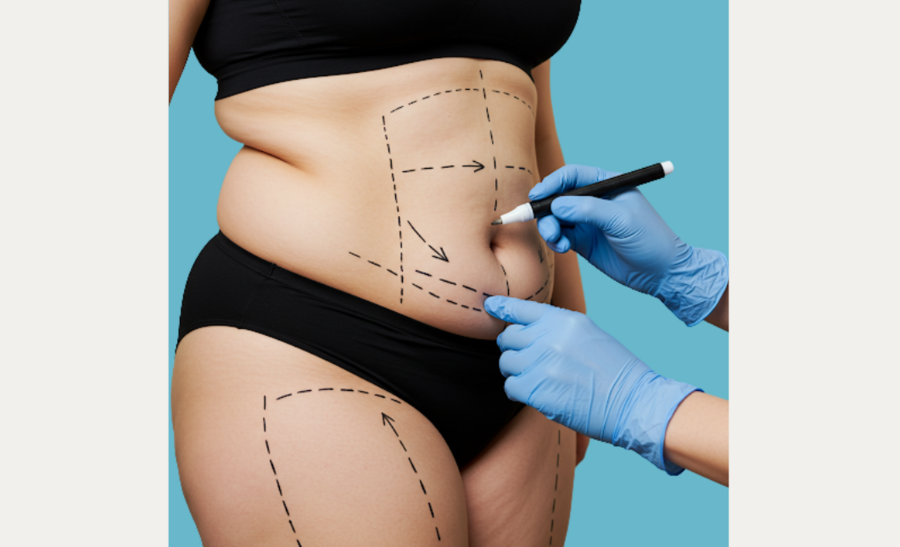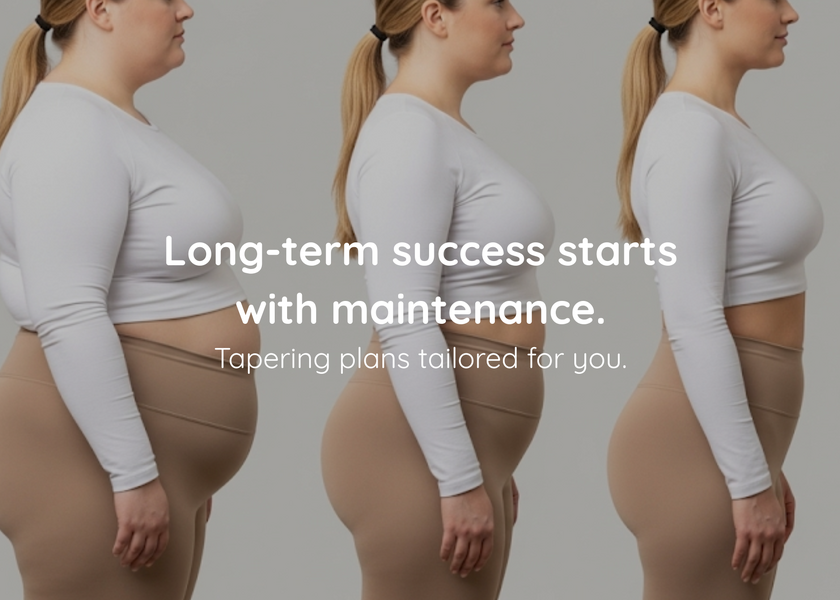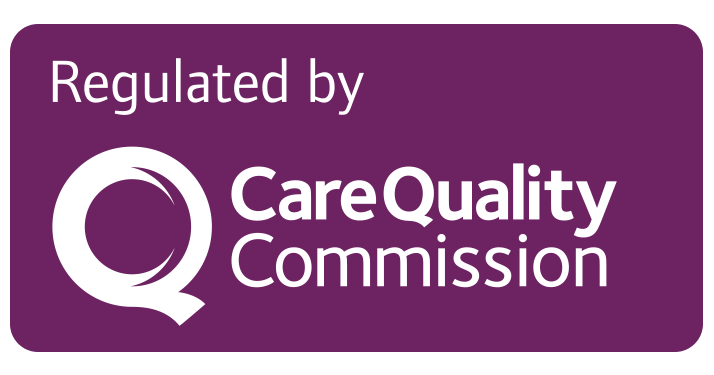
The introduction of glucagon-like peptide-1 (GLP-1) receptor agonists, such as semaglutide (Ozempic, Wegovy) and tirzepatide (Mounjaro), has transformed weight management. Originally designed to treat type 2 diabetes, these medications have gained popularity for their impressive ability to promote significant weight loss. Studies show that GLP-1 weight loss drugs can reduce the risk of future health issues—like diabetes, high blood pressure, heart attacks, and strokes—by up to 20% (Lancet, 2021). While the health benefits are clear, rapid weight loss is also driving a surge in demand for body contouring procedures, especially tummy tucks.
How GLP-1 Medications Work
To understand this trend, let’s explore how these drugs function:
Wegovy (Semaglutide): Wegovy mimics the GLP-1 hormone, which your gut releases after eating. It stimulates insulin release from the pancreas when blood sugar rises, suppresses glucagon to lower glucose production in the liver, and slows gastric emptying. This keeps you feeling full longer and reduces appetite. It may also influence brain receptors that control hunger (Wilding et al., 2021).
Mounjaro (Tirzepatide): This drug takes it a step further as a dual GIP and GLP-1 receptor agonist. By activating both glucose-dependent insulinotropic polypeptide (GIP) and GLP-1 receptors, it boosts insulin secretion and enhances appetite suppression, often leading to even greater weight loss (Jastreboff et al., 2022).
On average, users of GLP-1 medications like Wegovy can lose 15-20% or more of their starting body weight. However, this rapid transformation often leaves behind excess skin, especially around the abdomen, arms, and thighs. Skin stretched by excess weight may not snap back fully due to limited elasticity, creating a new need for cosmetic solutions.
The Rise of Body Contouring Procedures
This GLP-1 weight loss boom has sparked a growing interest in procedures to address excess skin and reshape the body. Here are the most popular options:
Tummy Tucks (Abdominoplasty): A tummy tuck removes excess skin and fat from the abdomen while tightening muscles for a smoother, firmer look. The scar is discreetly placed below the waistline, and it’s often paired with liposuction for optimal results. Typically a day-case procedure, it’s a top choice for post-weight-loss patients.
Body Lifts: This major surgery tackles excess skin across multiple areas—like the abdomen, thighs, and buttocks. It may involve lifting abdominal skin, repositioning the belly button, tightening muscles, and lifting buttock tissue. Ideal for those with widespread skin laxity after massive weight loss, recovery takes about 6 weeks.
Arm Lifts (Brachioplasty): This procedure trims excess skin and fat from the upper arms, leaving them contoured but requiring around 6 weeks of downtime.
Thigh Lifts: Targeting the thighs, this surgery removes excess skin and fat for a toned look, though there’s a 20% chance of wound complications, manageable by your surgeon. Expect 6 weeks of recovery.
BodyTite/Quantum/FaceTite: Using radiofrequency-assisted liposuction, this minimally invasive option melts fat and tightens skin by stimulating collagen production. It’s best for milder cases and offers a quick 3-5 day recovery. It can complement other surgeries.
Morpheus 8: A non-invasive treatment for mild skin laxity, Morpheus 8 uses radiofrequency microneedling to boost collagen. Results can last up to 3 years with maintenance after 12 months and minimal downtime.
Ablative Laser (CO2 or Erbium YAG): These lasers stimulate collagen and reduce moderate skin laxity with a downtime of up to 2 weeks. Multiple sessions may be needed.
"Ozempic Face" and Facial Solutions
Rapid weight loss can also affect the face, leading to volume loss and a gaunt look often called "Ozempic face." Treatment options include:
Facial Fillers: Quick injections to restore lost volume.
Fat Grafting: A more invasive but permanent solution, transferring fat from elsewhere in the body to the face.
Skin Tightening: Non-invasive methods like Morpheus 8 or lasers to improve elasticity.
Key Considerations for Body Contouring
Before pursuing surgery, experts recommend maintaining a stable weight for 6-12 months post-weight loss (American Society of Plastic Surgeons, 2023). Skin elasticity varies by individual, influencing how much it retracts naturally. Proper nutrition during and after weight loss also supports skin health and recovery.
Conclusion: A New Era of Weight Loss and Aesthetics
GLP-1 medications like Wegovy have revolutionized weight management, but they’ve also ushered in a new demand for tummy tucks and body contouring. As these drugs grow more popular, understanding their impact on body aesthetics is crucial. Consulting a skilled, reputable surgeon is essential to assess your suitability and weigh potential risks, as every procedure carries possible complications.
For those exploring GLP-1 weight loss options or considering body contouring after significant weight loss, professional guidance can help you achieve both health and aesthetic goals.
Written by | Jonny Herron | FdSc, BMBS, BSc (hons), Dip BBM, Dip LM, DMCC, PGCME, MSc, CMgr, MRCSEd, MRSB, MCMI, MFSTEd, MFRRHHEd, FRSPH, FZS, FBPI, FIABH Plastic Surgeon Senior lecturer in Aesthetic medicine University if Greater Manchester
References
https://www.nejm.org/doi/full/10.1056/NEJMoa2032183
journal of Medicine, 384(11), 989-1002.
Jastreboff, A. M., et al. (2022). Tirzepatide once weekly for the treatment of obesity. The New England Journal of Medicine, 387(3), 205-216.
The Lancet. (2021). GLP-1 receptor agonists and cardiovascular outcomes. The Lancet Diabetes & Endocrinology, 9(6), 347-349.
American Society of Plastic Surgeons. (2023). Body contouring after massive weight loss. Retrieved from https://www.plasticsurgery.org/x3







